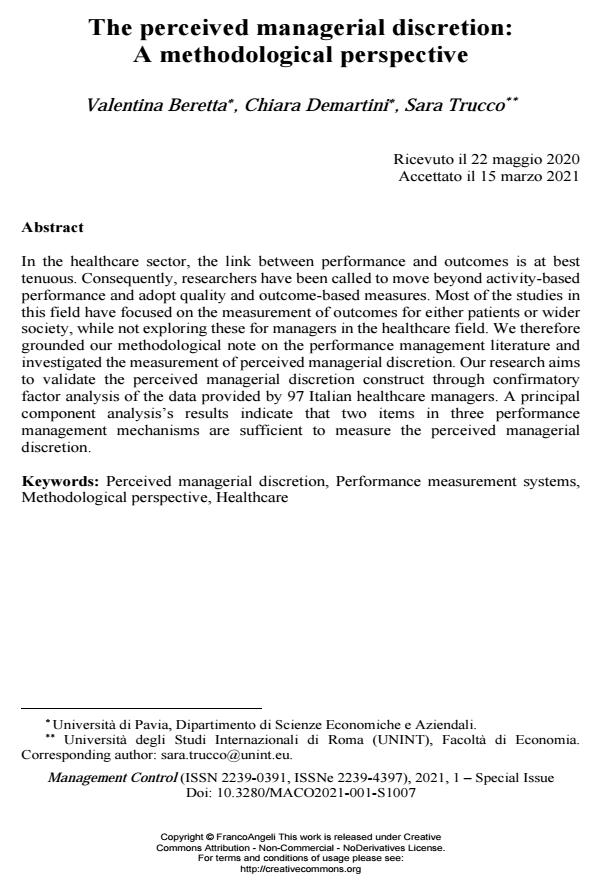The perceived managerial discretion: A methodological perspective
Titolo Rivista MANAGEMENT CONTROL
Autori/Curatori Valentina Beretta, Chiara Demartini, Sara Trucco
Anno di pubblicazione 2021 Fascicolo 2021/suppl. 1
Lingua Inglese Numero pagine 18 P. 123-140 Dimensione file 196 KB
DOI 10.3280/MACO2021-001-S1007
Il DOI è il codice a barre della proprietà intellettuale: per saperne di più
clicca qui

FrancoAngeli è membro della Publishers International Linking Association, Inc (PILA)associazione indipendente e non profit per facilitare (attraverso i servizi tecnologici implementati da CrossRef.org) l’accesso degli studiosi ai contenuti digitali nelle pubblicazioni professionali e scientifiche
In the healthcare sector, the link between performance and outcomes is at best tenuous. Consequently, researchers have been called to move beyond activity-based performance and adopt quality and outcome-based measures. Most of the studies in this field have focused on the measurement of outcomes for either patients or wider society, while not exploring these for managers in the healthcare field. We therefore grounded our methodological note on the performance management literature and investigated the measurement of perceived managerial discretion. Our research aims to validate the perceived managerial discretion construct through confirmatory factor analysis of the data provided by 97 Italian healthcare managers. A principal component analysis’s results indicate that two items in three performance management mechanisms are sufficient to measure the perceived managerial discretion.
Parole chiave:Perceived managerial discretion, Performance measurement systems, Methodological perspective, Healthcare
- Organizational agility, dynamic managerial capability, stakeholder management, discretion, and project success: Evidence from the upstream oil and gas sectors Muh Arifuddin Budiman, Budi W. Soetjipto, Ratih Dyah Kusumastuti, Setyo Wijanto, in Heliyon e19198/2023 pp.e19198
DOI: 10.1016/j.heliyon.2023.e19198 - Informazioni budgetarie e prospettive di Behavioral Management Accounting nelle aziende sanitarie pubbliche italiane Domenico Raucci, Manuela Paolini, in MANAGEMENT CONTROL 2/2022 pp.117
DOI: 10.3280/MACO2022-002006
Valentina Beretta, Chiara Demartini, Sara Trucco, The perceived managerial discretion: A methodological perspective in "MANAGEMENT CONTROL" suppl. 1/2021, pp 123-140, DOI: 10.3280/MACO2021-001-S1007